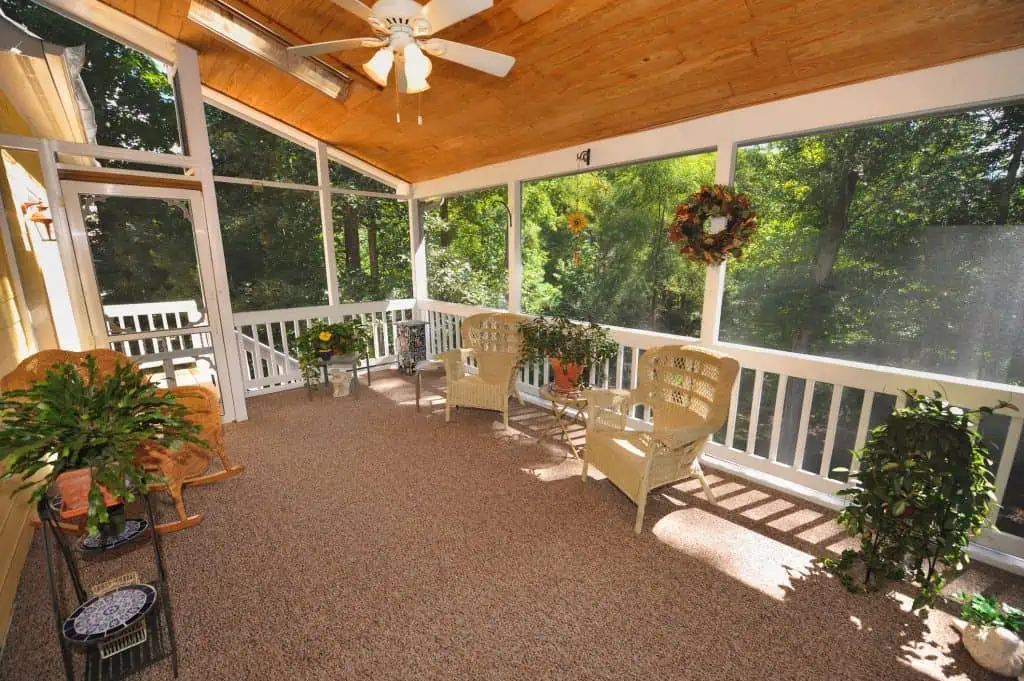
As the seasons change, many families yearn to enjoy the great outdoors without battling the elements. A sunroom or enclosed patio, commonly known as a three- or four-season room, offers the perfect solution to relish nature’s beauty while staying comfortable and protected. However, choosing between a three- or four-season room can take time and effort.
At Ken Spears Construction, we understand the importance of making an informed decision to create a space that complements your family’s lifestyle. In this blog post, we’ll delve into the differences between these two options, helping you make the best choice for your family’s needs.
Why Add a Sunroom To Your Home?
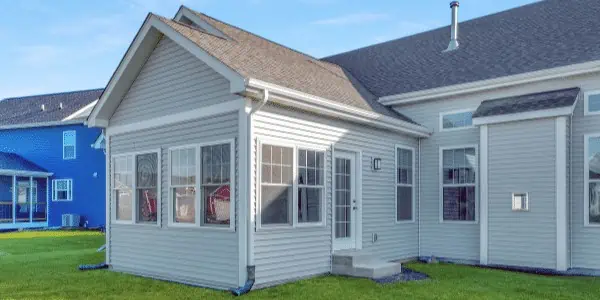
Consider adding a sunroom to your home if you desire a versatile, tranquil space for relaxation, entertainment, or enjoying the outdoors in comfort. Sunroom additions offer a beautiful connection to nature while shielding you from the elements, harsh weather, and insects. Whether you opt for a three-season or four-season sunroom, this versatile space can be a guest room or a permanent living area for a family member.
Understanding Three-Season Rooms
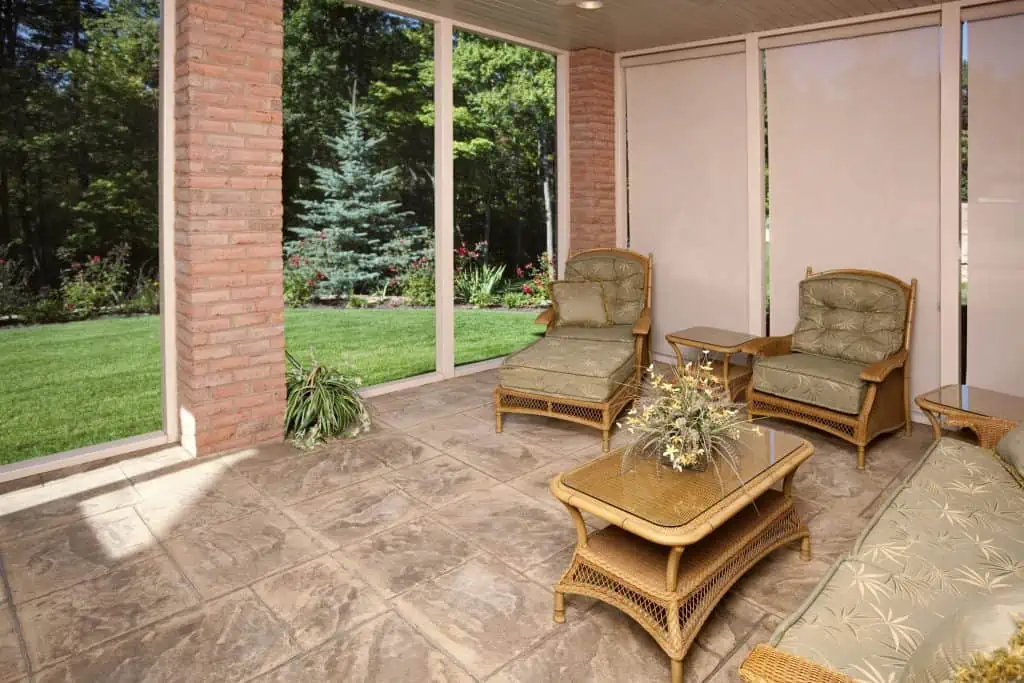
Three-season rooms are versatile living spaces designed to be enjoyed during spring, summer, and fall. They are typically enclosed with large windows and screens, allowing plenty of natural light and fresh air flow. The key feature of a three-season room is its ability to provide a cozy spot to bask in nature’s beauty while protecting you from pesky insects and light rain. Three-season rooms lack heating and insulation for cold winters. For year-round enjoyment, opt for a four-season room, as it can be heated and cooled to function fully every day of the year.
Benefits of a Three-Season Room:
- Cost-Effective: Three-season rooms are more budget-friendly than four-season rooms due to their simpler design and lack of insulation.
- Natural Ventilation: A three-season room with large windows and screens allows for excellent natural ventilation, creating a refreshing and airy environment.
- Enjoyment of Spring, Summer, and Fall: A three-season room offers a beautiful retreat for most of the year for families residing in milder climates.
Considerations for Three-Season Rooms:
- Limited Winter Use: Due to minimal insulation, three-season rooms are not well-suited for cold winters, making them less ideal for families in colder regions.
- Temperature Control: While these rooms offer some temperature control through ceiling fans or space heaters, extreme weather conditions may limit their functionality.
Understanding Four-Season Rooms
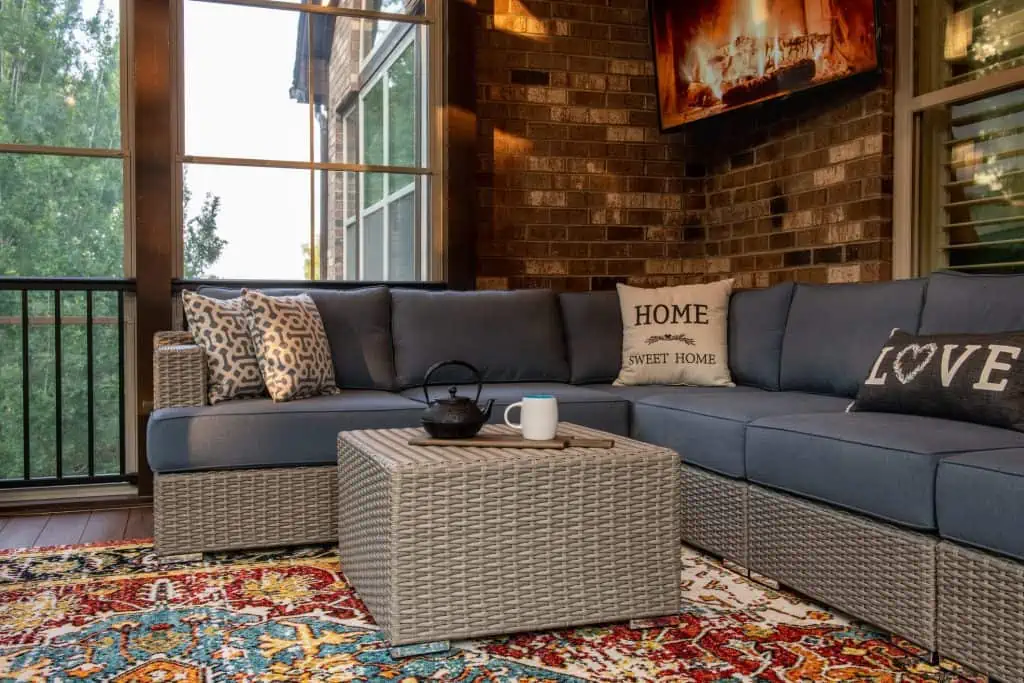
As the name suggests, four-season rooms, also known as all-season rooms, are designed to be used throughout the year. These spaces are akin to an extension of your home, boasting insulation, heating, and cooling systems that ensure comfort, no matter the weather conditions outside. It features aluminum or vinyl framing with steel reinforcement and is thermally engineered for efficient temperature control.
This sunroom can be custom-built into your home using double-pane glass panels, seamlessly connected to your main living spaces. Placing it on the west or south side maximizes warmth and sunlight. With the right design, it can even serve as a luxurious space for overnight guests, a home office, or a remote classroom. Enhance the room with door and window rolling systems, tinted and high-performance glass, built-in storage, and luxury finishes.

Benefits of a Four-Season Room:
Year-Round Use: A four-season room offers the ultimate flexibility, allowing your family to enjoy the beauty of each season without being hindered by weather extremes.
Enhanced Comfort: With proper insulation and climate control, these rooms maintain a cozy temperature regardless of external conditions.
Increased Home Value: Adding a four-season room to your property can significantly boost its market value, making it a valuable investment for the future.
Considerations for Four-Season Rooms:
Higher Investment: The increased functionality of four-season rooms comes at a higher cost due to additional construction materials and HVAC systems.
Space Availability: The decision to add a four-season room may be influenced by the available space in your home, as it may require more significant alterations than a three-season room.
The Difference Between 3-Season and 4-Season Rooms for Outdoor Living
Three-season and four-season rooms offer protected environments but have key differences to consider. They both offer plenty of windows for natural light but diverge in framing and glass types, affecting year-round functionality. The main differences include:
Usage: Four-season rooms are usable year-round with proper heating and cooling, while three-season rooms aren’t suitable for extreme temperatures.
Materials: Four-season rooms use dual-insulated glass, better insulation, and higher-quality materials, whereas three-season rooms have single-pane glass and less insulation.
Design: Four-season rooms are connected to the HVAC system and have an entry door from the house, while three-season rooms may have separate entry points and independent heating/cooling.
Cost: Four-season rooms have a higher initial investment due to better materials and engineering, but they offer better returns in the long run.
Benefits of Three and Four-Season Rooms
- Enhanced outdoor experiences, free from pests and weather disruptions.
- Shaded space protected from rain, snow, and winds.
Enhance Your Sunroom: Convert from Three-Season to Four-Season
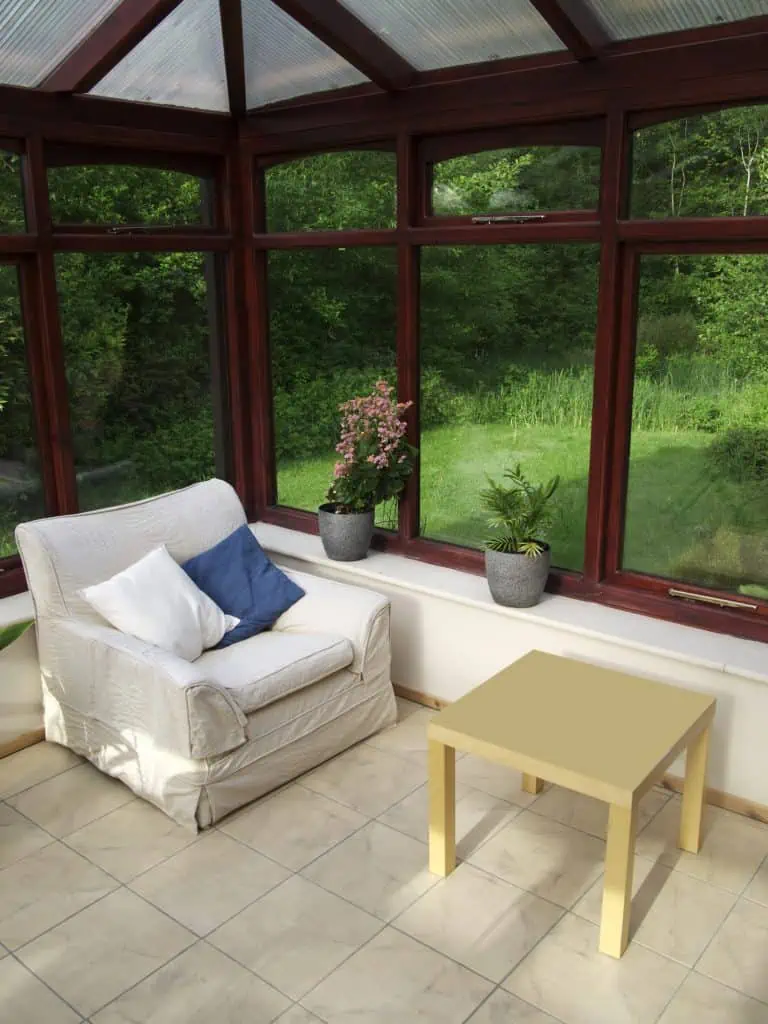
If you don’t currently require a fully functional four-season room, there’s an option to make the transition in the future with straightforward structural modifications. We will start by expanding the ventilation system to cover the sunroom and upgrade the windows and insulation for climate control. We would discuss with you investing in new flooring, ceiling, and an interior door for improved access. This transformation will turn your three-season room into a versatile upscale sunroom, adding value and flexibility for year-round use.
Adding a Three-Season or Four-Season Room: Value and Investment
Building a three-season room requires a smaller initial investment, ranging from $10,000 to $40,000, depending on size and complexity. Prefabricated kits or enclosing an existing patio are more cost-effective options. In contrast, a four-season room addition costs between $20,000 to $75,000, similar to a traditional home addition.
Both types of sunrooms enhance curb appeal and appraisal value, with an estimated ROI of about 50%. However, a highly functional four-season room may appeal more to potential homebuyers. Beyond financial value, consider the improved quality of life for your family. Expanding outdoor living options and thoroughly enjoying your property makes creating a sunroom a worthwhile investment.
Making the Right Choice:
Consider your family’s location, lifestyle, and budget when deciding between a three- or four-season room. A three-season room could be an excellent fit for milder climates and a more cost-effective space for seasonal enjoyment. However, a four-season room is the way to go for a versatile and comfortable space to be used year-round. Consider your usage preferences, budget, timeline, and intended purpose for the area. For Illinois, a four-season room is recommended due to severe winters.
At Ken Spears Construction, we have extensive experience designing and constructing three- and four-season rooms. Our team of experts is committed to understanding your family’s unique needs and crafting the perfect space to complement your lifestyle.
Let’s Construct Your Dream Sunroom
Whether you opt for a three- or four-season room, Ken Spears Construction is here to turn your vision into a reality. With our expertise and dedication to customer satisfaction, you can trust us to create a beautiful and functional space that will enhance your family’s enjoyment of the outdoors, all while staying cozy and comfortable throughout the year. Contact us today for your consultation, and let’s embark on this exciting journey together!


